Introduction
The fashion and apparel industry in the United Kingdom has experienced steady growth as more customers embrace renown brands such as Ralph Lauren, Nike, and H$M. The fashion industry and Apparel of the UK has an estimated market value of £50 billion.
Specifically, this industry is estimated to be growing at an annual rate of 7% as fashion becomes popular in the UK. At present, the fashion industry command 6% of the total market value of the consumer purchases in UK. The market share is expected to expand further to 15% by 2015.
The fashion industry in the UK at present is controlled by Ralph Lauren, Nike, and H$M who have managed to establish a household name for their fashion brands. Moreover, promotional services adopted by these companies have spurred the growth of fashion production in the United Kingdom market.
In addition, adoption of efficient and reliable technology in the marketing of these products has positively skewed the market to the advantage of these three retail giants. Thus, this reflective treatise attempts to explicitly review the aspects of store layout and design, retail pricing, and merchandise assortments in these retail stores. The treatise adopts a comparative analysis module.
About these Companies
Nike Inc
Nike Inc is one of the top sports footwear and accessories designers in the world. At present, the company controls a market share of 30% of the UK athletic market. This company stocks sports balls, bags, and eyewear, footwear, and sports shoes for adults and children. The London store is located at Westfield London Shopping Centre along Oxford Street (“NIKE Free: Products and Market”, par. 5).
H&M Inc
This company has been in existence for more than two decades. The company stocks a range of fashion ware for adults and children of both genders. The company has an amazing range of fashion collection that is relatively affordable to the majority of Londoners. The head store in London is located at Regent Street in Dinkins and Jones building (“H&M: Marketing Strategies”, par. 3).
Ralph Lauren Inc
The Ralph Lauren UK store specializes in fashion accessories and apparels such as fashion clothing and footwear brands for males and females of all ages. The company boost of uniqueness and brand loyalty to the middle class customers in London. The London office is located at Cork Street (“Ralph Lauren: London Marketing Activities”, par. 2).
Store Layout and Design
Ralph Lauren

The topological structure of Ralph Lauren Company consists of communication and operations management system which help in managing marketing, online sales, and direct sales.
Based on the credo emphasize, it stresses on ethical behavior among sales staff and customer satisfaction within accepted standards of moral obligation on the forefront as indicated in the mission statement hanging on the front office wall. The Ralph Lauren store occupies more than 6000 square feet of space and has the traditional UK design architecture.
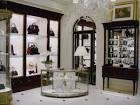
The store has a unique arrangement in terms of utilization of space. The store is divided into four areas, that is, the exclusive range focal point, entertainment and refreshment area, office area, and the focal store points. Upon entering the expansive store, the customer will notice the attractive display of polo shirts, watches, shoes, and other sports ware hanged on the traditional UK brackets.
The brackets are made in bright colors and the wall beaming with displays of fashion celebrities such as David Beckham and Naomi Campbell. The next room is the exclusive range focal point which stocks customized and expensive designer wears.
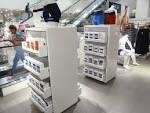
The marketing and distribution channels are run from a central point, that is, the main store area. It is apparent that company structure, operations management, and efficiency of the advertisement department determine sustainability of its business.
Besides, the ability to customize products, attractive display, and offer competitive but high quality services has made this store successful and profitable in the UK. Skills required in supporting business strategy plan are found in the integrated management model which functions as an implementer and driver of business decisions.
The Company’s retail management systems incorporate planning, development, implementation, and discovery. Reflectively, the process captures organization chart, status reports, process map, compliance requirements, review structure, activities, dates, and resources employed within a specified period of time against response from customers. The pictures below were taken from within the store.
The transfer of brand knowledge is enhanced by other factors that include awareness and image. It is an area that continues to fascinate considering the interconnection between the recognition, recall, uniqueness, and positive attributes. Growth in brands is mainly subjective in nature meaning that the internal environment has the greatest influence.
Nike Inc

Nike store is larger than Ralph Lauren store and occupies a space of more than six thousand square feet. The store is very spacious and has an artistic display of its assortments arranged by sizes and categories.
The main mall’s walls have animated Nike products advertisement and pictures of the world athletic champion Hussein Bolt and the basket ball player Kobe Bryan among other renowned sports personalities.
Just like in Ralph Lauren product display, Nike’s products displays easily attract a potential customer upon entry into the store. In fact, the first thing a customer will notice is the unending line of different product assortments from brightly painted stalls with the Nike brand logo running below the products.
This aspect facilitates easy identification of customer responses to external stimuli, branding of private store labels, and evaluation of the marketing strategies that is used to promote store’s brands.
The store’s brands have benefit greatly from the improvement of overall production quality and marketing support as much as it is done from evolving purchasing habits based on the rapid changes in geo-demographic and psychographic behaviors of the customers influenced by what they see.
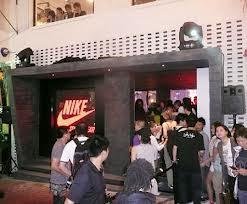
The resultant dependent variables of the Nike’s layout include increasing customer numbers, improved quality of goods, improved customer satisfaction, increased market share, and extended brand loyalty to the store. Essentially, the bridging of quality concerns between store and name brands has reduced the reputation gap leading to increased propensity of store brands.
Nike’s strategy in marketing its products relied on the assertion that “products don’t just perform, they actually exhibit behavior” (Kotler 22). This exhibits the nature of niche marketing by focusing on utmost premium brand quality that customers demand or may not know that they require at that time.
The company emphasized on creating sportswear trends. This is opposite of the conventional approach of forming focus groups who are interviewed on what attributes potential customers preferred.
Nokia took the approach of innovating new features positioned to be of great use in the feature without necessarily involving the potential customer in the development process. Specifically, the brand logo has remained instrumental in the marketing strategy.
Under certain conditions there was chance that they might consider switching to other brands. This is an avenue that is available for store brands which are targeting the market shares of name brands implying that the increasing pressure on name brands is benefiting them. The possibility that consumers could consider switching brands is important in increasing brand awareness. Through intensive marketing, the logo Nike is recognizable by nearly all potential customers in the UK. Since the logo has been animated and runs 24/7 at the store’s entrance, the self advertisement is critical in attracting undecided customers who are just passing by the store.
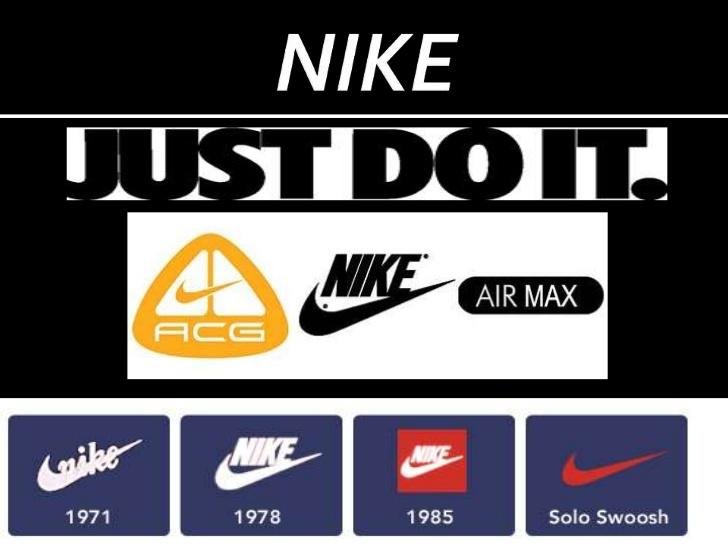
H&M Inc
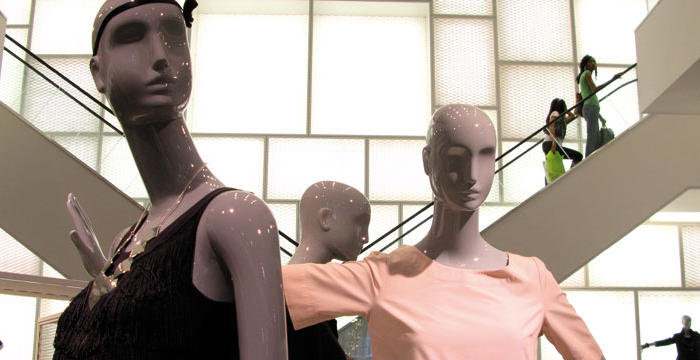
H&M Inc store occupies three floors with each floor selling different categories of fashion products. Basically, this company has utilized the role of the digital media in increasing the targeting objectives to promote brand growth and brand logo in its attractive and convincing display price tags.
By combining the chosen generic strategy along with product and market positioning strategy, H&M brand has been able to develop its niche identity in the UK as that store stocking affordable designer clothing along the Regent Street. Linking the two sides of the market is important, that is, the low income and high income customer ends.
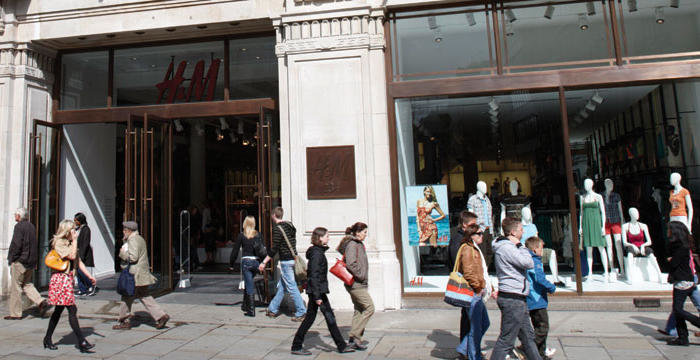
In essence, a brand involves; name, packaging, advertising, consistency, and reliability. It involves the symbol(s) of identification of a product or service that seeks to establish a degree of differentiation between it and other similar products and/or services. Branding offers “differential advantage (desirable attributes) over rivals’ products” (Kotler 34).
It is vital part of establishing healthy brand equity. The choice of branding is driven by the need to create that perception of differentiation. It takes some initial costs to develop the branding concepts but the advantages of branding products are; easier to sell, ability to legally protect the product, it offers some barriers to competition, and generally promotes customer loyalty (Kotler 33).
As a matter of fact, H&M has internalized this in their display of product. The logo H&M and their display are unique and cannot go unnoticed by any potential customer. Besides, the store is very spacious and offers customized services from its many sales staff. Retailers preferred to generally use the associative name H&M to refer to its assortment of fashion designs that continues to make statement in the stratified UK market.
The unique features are trademarked and allow H&M’s strong brand equities to establish reasonable barriers to competition. This was mainly because of these products being considered as off-brand unlike the H&M’s on-brand logo.
H&M Inc has exploited the power of positioning in relation to perception among the UK clients in its layout. Perception of brand equity is a major driving in promoting the acceptance of store brands.
The positioning strategy that is implemented by the retailer dictates the perception of the consumers about the brand and its related value to them. The H&M logo advertisement is very effective in terms of attention since it is decorated with simple to understand scenes besides the warm red color.
The strategically placed background red color is an eye catcher associated with pomp and sophistication. In addition, the targeted passing customer would immediately develop curiosity to understand the symbolic importance of the bright displays in the store.
As a result, it creates an intrinsic motivation response that triggers the mind to activate affiliation, self acceptance, and feign community feeling of belonging to the H&M brand. In the end, this advertisement succeeds in appealing to emotions through capitalization on biases and prejudices of UK population in the streets of London.
Generally, through envision creation of a simultaneous but independently functioning need to identify with attractiveness at Ralph Lauren, Nike, and H&M, a customer is easily swayed into buying the advertiser’s appeal when purchasing (Levy and Weitz 79).
Often, the attractiveness is displayed in tonal variation and language affirmativeness that directly appeal to positives emotions among target audience of the pitched idea. In the end, target audience will “accept the product without thinking very much about what the glittering generalities mean-or whether they even apply to the product”(Kotler 56).
Retail Pricing
Pricing differences between private labels and national labels is decreasing with taste, durability, and quantity being the more important factors for the consumers. Marketing around premium products positioning has long-term sustainability. This is supported by sustained advertising promotions, product availability, and sustainable sourcing.
Reflectively, “a best value strategy represents somewhat of a trade-off between the risks of a cost-leadership strategy and the risks of a differentiation strategy” (Kotler 71). The strategies may be broad or narrow based on the three strategies of differentiation, cost-leadership, and best value. In spite of well-developed strategies, competitive dynamics are fluid (Levy and Weitz 29).
Pricing objective
The pricing objective adopted by the Ralph Lauren, H&M, and NIKE is quantity maximization since the companies’ main mission is to become leaders in terms of market share amongst companies in the fashion and apparel industry of the UK. Consequently, the pricing objective of these companies seeks to maximize the number of the new fashion products to be sold in the dynamic UK market.
Pricing strategies
According to Kotler (2003), several pricing strategies exist for companies to choose from, however, some of these pricing strategies only work well with certain pricing objectives. The three companies have adopted multiple pricing, good, better, best pricing, loss leader pricing, penetration pricing and product bundle pricing for their different categories of fashion products (Kotler 19).
Multiple pricing: aims at luring customers to make large purchases by offering slight discounts to customers who buy goods in large quantities. At H&M and Ralph Lauren stores, the prices of single items are slightly higher to those that purchased in bulk.
For example, at Ralph Lauren store, buying one new polo shirt cost the customer approximately $ 25; the customer will be required to pay $ 40 for two shirts. As a result, the customers will feel that they are getting discount for buying two items since $ 40 for two shirts is $ 2.5 less than $25 for a shirt.
The strategy has been able to generate more profit for the company by increasing the quantity of items sold, as well as through increasing prices for customers who purchase one item. Practically, the strategy penalizes the customer for purchasing one item since the price is typically set higher than it will cost.
Good, better, best pricing: this is a pricing strategy in which the price of the same item increases with slight changes that are made to the product, for example, changes in design. The price can be offered in a series of three formats with the price of each series rising above the price of the previous series.
The goods that are priced at ‘better” price and those that are priced at “best” price require more attention from the producer than those with “good” price; however, the higher prices charged for them are worth the extra effort (Levy and Weitz 36).
For example, the 2009 NIKE air sports shoe edition is categorized as being “good” price, while that of 2011 is categorized as “better” price and the 2013 edition of the same product is priced at “best” price in the NIKE store.
Loss leader pricing: in this strategy, the customers are enticed into visiting the shop that deals with different product or parts by reducing the price of one item. This is done with the hope that when customers visit the shop to make purchase of the cheaper item they may also buy other items.
For example, in applying this strategy to the pricing of the female clothes, H&M Company uses other accessories such as shoes as the loss outfit product, thus customers who come to buy clothes may end up buying other accessories such as matching shoes to complete the outfit.
Product bundle pricing: this pricing strategy is applied when the producer wants to get rid of overstock or sell complementary products. The products are bundled together and the customer who buys the new item can get an older or complimentary good for less. In respect to the strategy of clearing 2012 stock models, the three companies have decided to sell the older versions or accessories in bundles at lower prices.
Merchandise Assortments
In merchandise assortment, planning is critical, especially in a dynamic market controlled solely by customer preference and perception. In sales forecasting, H&M and Ralph Lauren companies have assorted their merchandise according to the lifecycle of each category.
For instance, the seasonal winter items such as heavy clothing for the companies are categorised as slow movables. Besides, the latest fashion design products are categorised in the exclusive purchase segment in the stores.
Basically, the assortment adopted by these companies was informed by past volumes of sales and customer responses to periodic surveys by the companies (Levy and Weitz 41). Through shotgun merchandising, the two companies have assorted their products to capture all the segments of the fashion and apparel industry of the UK.
On the other hand NIKE store has been assorted as a general store with the speciality department occupying a negligible space in the store. The company has amalgamated its inventory turnover to categorise the products. Through rifle merchandising, the NIKE Company has captured the athletic market segment of the fashion industry through it multiplex strategy of product market penetration.
Conclusion
The success of retail management depends on execution pricing, assortment, and design layout as components of marketing. Successful execution solely functions on inclusiveness, creation of quantifiable tracking devises for results, and recreating an informed support team.
Generally, these aspects should be practiced flexibly since event marketing environment is characterized by constant dynamics that may make previous designs irrelevant. NIKE, Ralph Lauren, and H&M companies are successful in marking their products in the UK.
Works Cited
H&M: Marketing Strategies 2013. Web.
Kotler, Paul. Marketing management: Analysis, planning, implementation and control. New Jersey: Prentice-Hall, Englewood Cliffs, 2003. Print.
Levy, Michael, and Weitz, Barton. Retailing Management, London: McGraw-Hill Education, 2011. Print.
NIKE Free: Products and Market 2012. Web.
Ralph Lauren: London Marketing Activities 2012. Web.